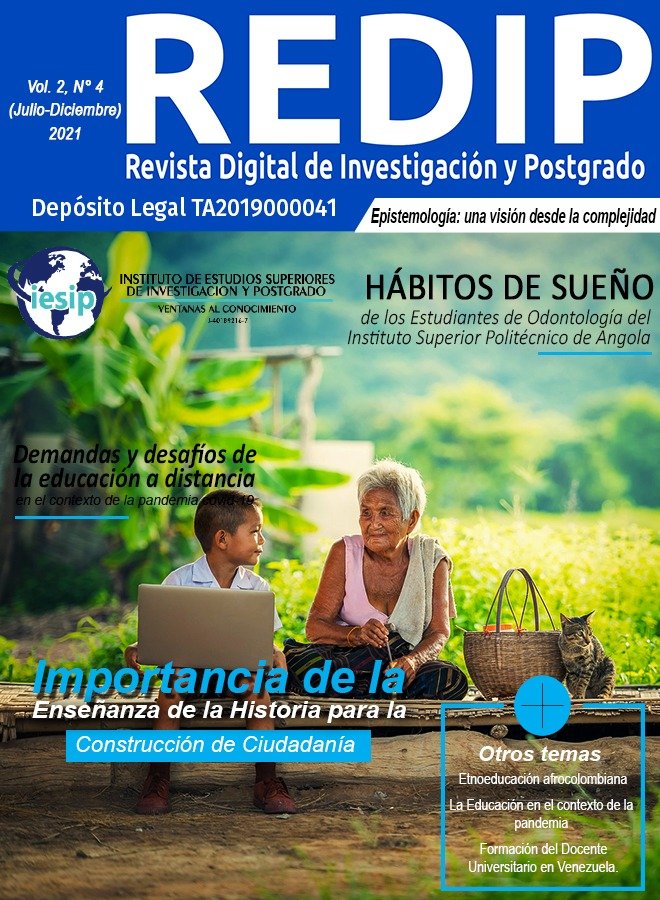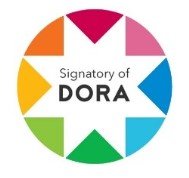Sleep habits of students on the Dental Medicine course at thePolytechnic Higher Institute of Angola
DOI:
https://doi.org/10.59654/ctm4as69Keywords:
Habits, sleep, students.Abstract
Sleep has important biological functions for the human organism, with emphasis on memory consolidation, thermoregulation and restoration of cerebral energy metabolism. The aim of the research is to identify the association between the nocturnal sleep habits in students of the Dental Medicine course of the ISIA. As for the methodology used, this is a descriptive, observational, prospective research with a qualitative and quantitative approach, with random sampling and participant observation. In terms of methodology, a sample of 126 students was selected, 77 (61%) of whom were female, with a mean age of 22.3 years. With the application of the Pittsburgh Sleep Quality Index (PSQI), it was found that a large portion of respondents have an average time of 5.5 hours of sleep at night and a latency period of 15 minutes, 95(75.3%) have scores higher than 5 points and therefore considered bad sleepers, 87(69.04%) have the perception of having a bad sleep. With the application of the Epworth Sleepiness Scale (ESS), it was possible to verify that 23 (18.2%) of the students presented light daytime sleepiness. It is concluded that a large portion of the interviewees, as regards their sleeping habits, are considered bad sleepers. Finally, it is considered necessary to carry out other studies with other samples with similar characteristics to those studied in order to establish comparative studies and the evaluation of the trend of the problem.
Downloads
References
Adelantado-Renau, M., Diez-Fernandez, A., Beltran-Valls, M. R., Soriano-Maldonado, A. & Moliner-Urdiales, D. (2019). The effect of sleep quality on academic performance is mediated by Internet use time: DADOS study. Jornal de Pediatria, 95(4), 410-418. https://pubmed.ncbi.nlm.nih.gov/29787701/
Aladair, M. J. (2019). Eletroencefalografia no estudo do sono e vigília. Guia básico de eletroencefalografia. Morsch. https://telemedicinamorsch.com.br/blog/eletroencefalograma-em-sono-e-vigilia
Bertasso de Araujo, P. A., Weiss, S. S., Wittkopf, P. G., Schmitt, N. A., Gonzáles, A. I. Pereira, L. D., Nahas, G. S., Aranha, E. E., Andrade, A. y De Carvalho, T. (2015). Índice de Qualidade de Sono de Pittsburg para o uso de reabilitação cardiopulmonar e metabólica. Revista Brasileira de Medicina do Esporte, 21(6), 472-475. https://www.scielo.br/scielo.php?script=sci_abstract&pid=S1517-86922015000600472&lng=pt&nrm=iso
Souza, J. C., Paiva T. y Reimão, R. (2008). Sono, qualidade de vida e acidentes em caminhoneiros brasileiros e portugueses. Psicologia em Estudo, Maringá, 13(3), 429-436. https://core.ac.uk/download/pdf/192746933.pdf
Published
Issue
Section
License
Copyright (c) 2021 Revista Digital de Investigación y Postgrado

This work is licensed under a Creative Commons Attribution-NonCommercial-ShareAlike 4.0 International License.
Esta licencia permite a los reutilizadores distribuir, remezclar, adaptar y desarrollar el material en cualquier medio o formato únicamente con fines no comerciales, y solo siempre que se atribuya al creador. Si remezclas, adaptas o construyes sobre el material, debes licenciar el material modificado bajo términos idénticos. CC BY-NC-SA incluye los siguientes elementos:
![]() POR: se debe dar crédito al creador.
POR: se debe dar crédito al creador.![]() NC: Sólo se permiten usos no comerciales de la obra.
NC: Sólo se permiten usos no comerciales de la obra.![]() SA: Las adaptaciones deben compartirse en los mismos términos.
SA: Las adaptaciones deben compartirse en los mismos términos.











